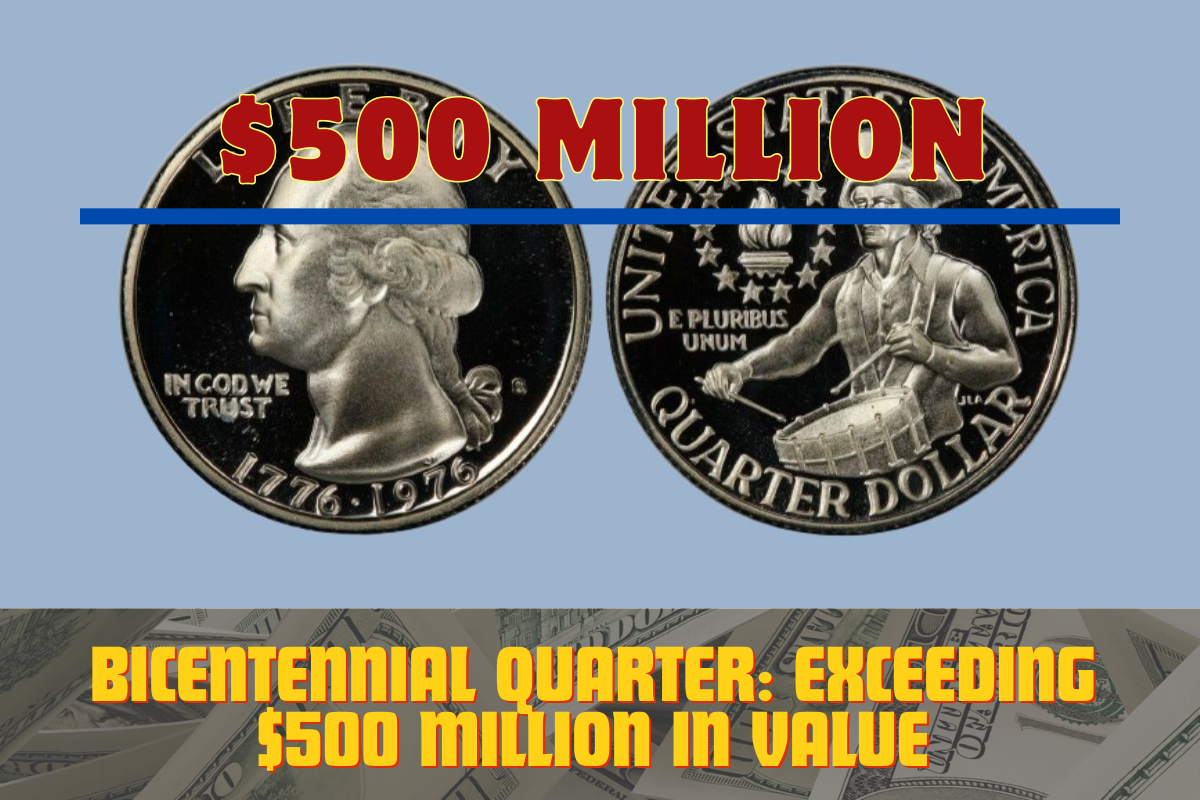The Bicentennial Quarter, a unique piece of U.S. currency, has captured the admiration of collectors and investors alike, with some examples of these quarters exceeding a staggering value of 500 million dollars. You might wonder, what makes these coins so valuable? Let’s explore the allure of the Bicentennial Quarter, its history, rarity, and the reasons why it can fetch such impressive sums in today’s market.
A Brief History of the Bicentennial Quarter
Created as part of the United States’ celebration of its 200th anniversary in 1976, the Bicentennial Quarter features a unique design that sets it apart from other coins. The front still showcases George Washington, while the back presents an elaborate depiction of Independence Hall. This design was a deliberate nod to the nation’s historical roots, making the quarter not only a means of currency but also a keepsake of American heritage.
The Design and Minting Process
When the U.S. Mint decided to mark this monumental occasion, they produced a limited run of many dollars worth of these quarters. The design was crafted by artist John Mercanti, and the production involved intricate processes and meticulous attention to detail. Only 40% of the quarters produced bore the commemorative image on both sides, which adds to the mystique and desirability of the coin.
Why Some Bicentennial Quarters Exceed 500 Million in Value
The staggering value of certain Bicentennial Quarters can be attributed to several factors, including rarity, condition, and demand among collectors. For instance, specific error coins—like those with double die obverse—can be remarkably valuable. In essence, rarity is the name of the game. The fewer coins that exist, the higher the price collectors are willing to pay.
Factors Influencing the Value of the Bicentennial Quarter
Collecting coins is not merely a hobby for some; it is an investment. Thus, understanding the market and what drives value is crucial. Here are a few key factors that influence the worth of Bicentennial Quarters:
Rarity and Demand
As with any collectible, the scarcity of certain coins dictates their market value. If a particular type of Bicentennial Quarter has a limited mintage or is accidentally misprinted, collectors often scramble to get their hands on it. This high demand paired with low supply creates a significant spike in value.
Condition is Key
The condition of a coin plays a crucial role in determining its worth. Coins that have been preserved in mint condition—often graded by professionals—can soar in value compared to those that have seen better days. Collectors are typically willing to pay a premium for proof-like coins or those that still shine as if they were just minted.
Market Trends
As with any investment, market trends can shift—sometimes dramatically. The popularity of coin collecting can ebb and flow, making timing essential for sellers. If a particular type of quarter becomes trending, its prices may soar, giving sellers a chance to cash in.
How to Start Collecting Bicentennial Quarters
If you’re intrigued by the idea of collecting Bicentennial Quarters, you’re not alone! Starting your collection doesn’t require a fortune. Begin by searching through your pocket change or asking family and friends. You would be surprised at what you might find! Consider joining coin collecting forums or groups where you can learn from seasoned collectors and perhaps trade or buy some rare pieces.
Conclusion
The Bicentennial Quarter has emerged as a symbol of both American history and a robust investing opportunity, with some coins fetching over 500 million dollars. Whether you’re a casual collector or a serious investor, there’s no denying the excitement that surrounds these extraordinary coins. Keep your eyes peeled, and who knows? You may just uncover a hidden gem that exceeds your wildest expectations!
FAQs
1. What is the Bicentennial Quarter?
The Bicentennial Quarter was minted in 1975 and 1976 to commemorate America’s 200th anniversary, featuring a unique design of Independence Hall on the reverse side.
2. How valuable can a Bicentennial Quarter get?
While most Bicentennial Quarters are worth their face value, certain rare versions or error coins can exceed 500 million dollars in value among collectors.
3. What factors increase a coin’s value?
Rarity, condition, and market demand are primary factors influencing a coin’s value, with rare errors or coins in pristine condition typically commanding higher prices.
4. Where can I find Bicentennial Quarters?
You can find them in your pocket change, through coin dealers, online auctions, or by joining coin-collecting communities.
5. Is it worth investing in coin collecting?
Coin collecting can be a rewarding investment, especially if you have a keen eye for rarities and market trends. However, it’s essential to do thorough research before investing significantly.
